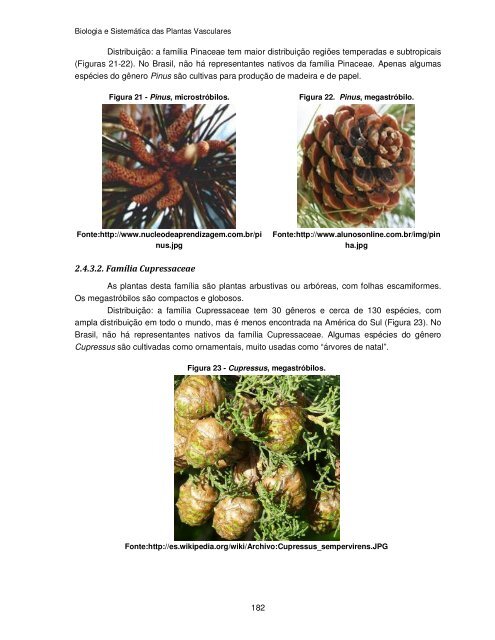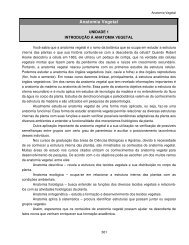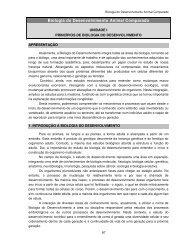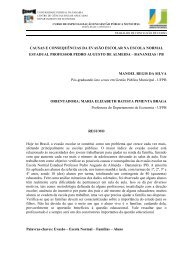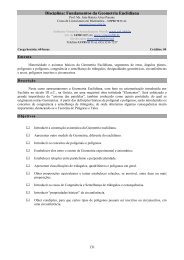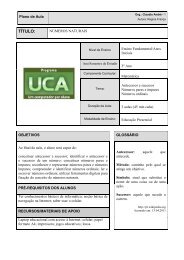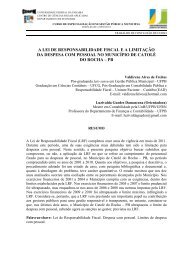Biologia e Sistemática das Plantas Vasculares - UFPB Virtual
Biologia e Sistemática das Plantas Vasculares - UFPB Virtual
Biologia e Sistemática das Plantas Vasculares - UFPB Virtual
You also want an ePaper? Increase the reach of your titles
YUMPU automatically turns print PDFs into web optimized ePapers that Google loves.
<strong>Biologia</strong> e <strong>Sistemática</strong> <strong>das</strong> <strong>Plantas</strong> <strong>Vasculares</strong><br />
Distribuição: a família Pinaceae tem maior distribuição regiões tempera<strong>das</strong> e subtropicais<br />
(Figuras 21-22). No Brasil, não há representantes nativos da família Pinaceae. Apenas algumas<br />
espécies do gênero Pinus são cultivas para produção de madeira e de papel.<br />
Figura 21 - Pinus, microstróbilos.<br />
Fonte:http://www.nucleodeaprendizagem.com.br/pi<br />
nus.jpg<br />
2.4.3.2. Família Cupressaceae<br />
182<br />
Figura 22. Pinus, megastróbilo.<br />
Fonte:http://www.alunosonline.com.br/img/pin<br />
ha.jpg<br />
As plantas desta família são plantas arbustivas ou arbóreas, com folhas escamiformes.<br />
Os megastróbilos são compactos e globosos.<br />
Distribuição: a família Cupressaceae tem 30 gêneros e cerca de 130 espécies, com<br />
ampla distribuição em todo o mundo, mas é menos encontrada na América do Sul (Figura 23). No<br />
Brasil, não há representantes nativos da família Cupressaceae. Algumas espécies do gênero<br />
Cupressus são cultiva<strong>das</strong> como ornamentais, muito usa<strong>das</strong> como “árvores de natal”.<br />
Figura 23 - Cupressus, megastróbilos.<br />
Fonte:http://es.wikipedia.org/wiki/Archivo:Cupressus_sempervirens.JPG


